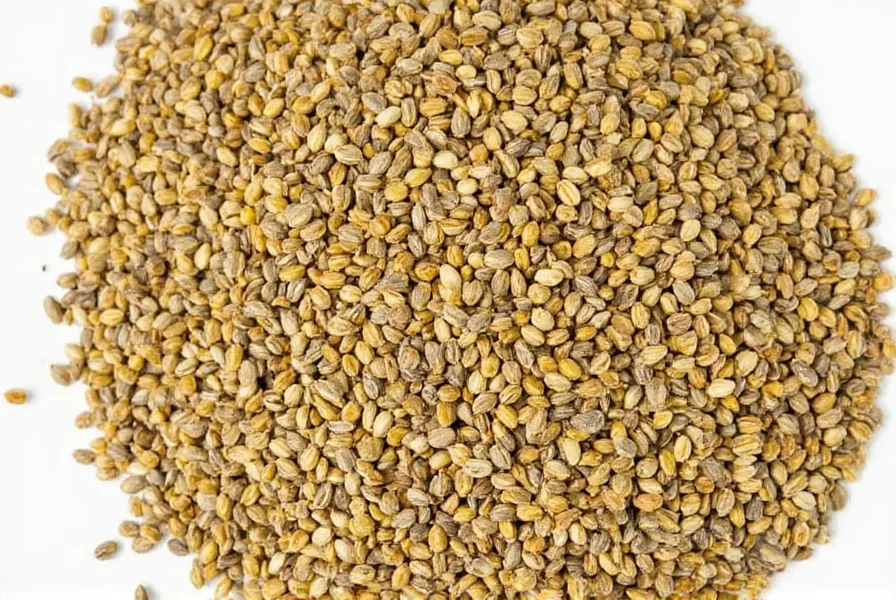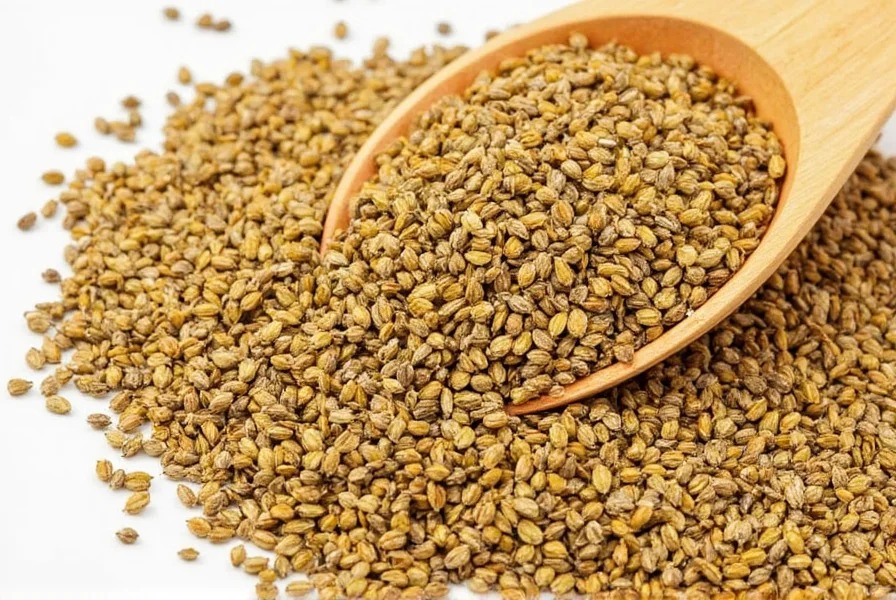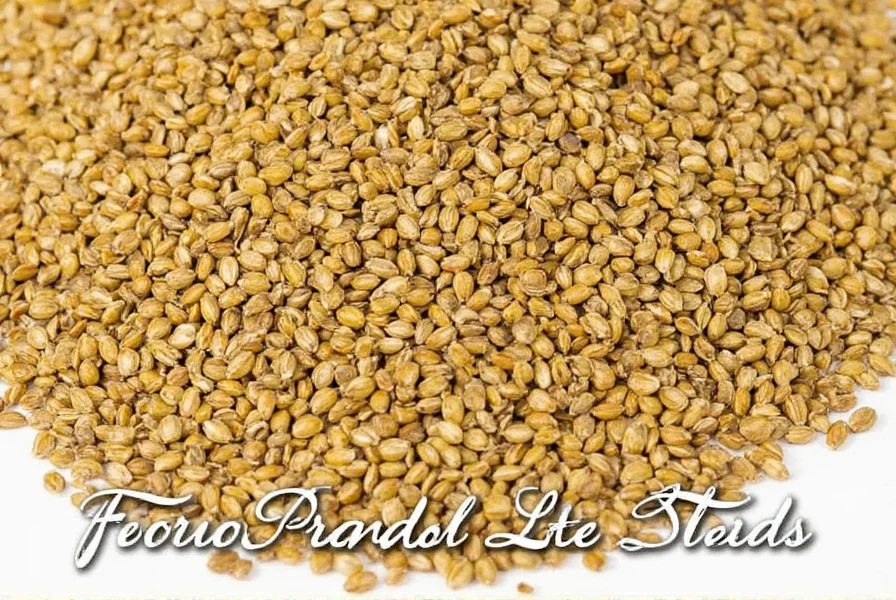These tiny powerhouses pack remarkable culinary versatility and nutritional value. Understanding their differences helps home cooks and professional chefs alike maximize their potential in the kitchen. Let's explore the world of mustard seeds in depth.
Types of Mustard Seeds and Their Characteristics
Not all mustard seeds are created equal. The three primary varieties serve different culinary purposes based on their flavor intensity and oil content:
| Type | Color | Flavor Profile | Common Uses |
|---|---|---|---|
| Yellow/White | Pale yellow | Mild, slightly tangy | American-style mustards, pickling, salad dressings |
| Brown | Brown to reddish-brown | Moderately hot, complex | Dijon mustard, Indian cuisine, marinades |
| Black | Dark brown to black | Most pungent, intensely spicy | Traditional Indian and Ethiopian dishes, specialty mustards |
When evaluating different mustard seed varieties for culinary applications, consider that black mustard seeds contain higher levels of sinigrin, the compound responsible for that characteristic heat. Brown mustard seeds offer the best balance for most cooking applications, while yellow seeds provide the mildest flavor preferred in commercial mustards.
Nutritional Benefits of Mustard Seeds
Mustard seeds nutrition facts reveal why they've been valued beyond just flavor. A single tablespoon (9g) of ground mustard seeds contains:
- Approximately 50 calories
- 3g of healthy fats
- 3g of dietary fiber
- 3g of plant-based protein
- Significant amounts of selenium, magnesium, and calcium
Research on mustard seeds health benefits shows promising results. The glucosinolates in mustard seeds may support cardiovascular health by helping regulate blood pressure. Additionally, the selenium content contributes to proper thyroid function. For home cooks interested in maximizing these benefits, using whole seeds and grinding them fresh preserves more nutrients than pre-ground versions.

Culinary Applications Across Global Cuisines
The versatility of mustard seeds in cooking spans multiple culinary traditions. In Indian cuisine, mustard seeds form the foundation of tempering (tadka) for dals and curries. Chefs typically heat oil until smoking, add mustard seeds, and wait for them to pop before adding other spices—a technique that releases their essential oils and maximizes flavor.
For Western applications, understanding how to use mustard seeds in homemade condiments transforms ordinary recipes. When making artisanal mustard, the ratio of mustard seeds to vinegar determines the final product's heat level. Whole grain mustard recipes typically use a combination of yellow and brown seeds for balanced flavor.
Professional chefs working with mustard seeds for pickling discover that the seeds enhance both flavor and texture. The tannins in mustard seeds help maintain vegetable crispness during the pickling process—a valuable technique for home canners exploring traditional preservation methods.
Proper Storage Techniques for Maximum Freshness
Learning how to store mustard seeds properly preserves their flavor and nutritional value. Whole seeds maintain freshness significantly longer than ground versions. For optimal shelf life:
- Store in airtight containers away from light and heat
- Whole seeds last 3-4 years at room temperature
- Ground seeds remain potent for 6-12 months
- Refrigeration extends shelf life by 50%
Home cooks testing mustard seeds expiration should check for rancidity by smelling—fresh seeds have a clean, sharp aroma while spoiled seeds develop a stale, oily smell. For those using mustard seeds in baking applications, proper storage prevents flavor transfer to delicate pastries.
Growing Mustard Plants for Home Harvest
Gardening enthusiasts interested in growing mustard seeds should know these plants thrive in cool weather. The Brassica family grows well in USDA zones 3-10 with moderate water requirements. For best results when cultivating mustard seeds at home:
- Plant seeds ¼ inch deep in well-draining soil
- Maintain consistent moisture during germination
- Harvest seed pods when they turn brown but before they split
- Dry harvested pods in a cool, ventilated area before threshing
Understanding mustard seeds growing conditions helps home gardeners produce high-quality seeds. The plants typically mature in 80-95 days, with leaf varieties ready sooner than those grown specifically for seed production.
Potential Concerns and Allergies
While generally safe, mustard seeds can cause issues for some individuals. Mustard seed allergy, though less common than other food allergies, affects approximately 0.1-0.2% of the population. Symptoms range from mild oral itching to severe anaphylaxis.
Those with thyroid conditions should monitor mustard seeds consumption as glucosinolates may interfere with iodine absorption in large quantities. However, typical culinary use presents minimal risk for most people. When incorporating mustard seeds into special diets, moderation remains key.
Conclusion: Maximizing Mustard Seed Potential
From their ancient origins to modern culinary applications, mustard seeds remain indispensable in kitchens worldwide. Whether you're a home cook exploring mustard seeds uses in everyday cooking or a professional chef developing new recipes, understanding these seeds' properties unlocks their full potential.
By selecting the appropriate variety, storing properly, and applying correct cooking techniques, you can transform ordinary dishes into extraordinary culinary experiences. The next time you reach for that jar of mustard seeds, remember you're holding centuries of culinary wisdom in your palm.

What's the difference between yellow and brown mustard seeds?
Yellow mustard seeds (Sinapis alba) have a milder, tangier flavor and are commonly used in American-style mustards and pickling. Brown mustard seeds (Brassica juncea) are more pungent with complex heat notes, making them ideal for Dijon mustard and Indian cuisine where deeper flavor is desired.
How do I properly toast mustard seeds for cooking?
Heat a dry skillet over medium heat, add mustard seeds in a single layer, and toast for 2-3 minutes until they begin popping. Shake the pan frequently to prevent burning. Properly toasted mustard seeds will become fragrant with a nutty aroma and slightly darker color, enhancing their flavor in dishes.
Can mustard seeds help with digestion?
Yes, mustard seeds contain compounds that stimulate digestive enzymes. Traditional medicine systems have used mustard seeds for centuries to alleviate indigestion. The fiber content also supports healthy digestion when consumed in culinary amounts as part of a balanced diet.
Are mustard seeds gluten-free?
Pure mustard seeds are naturally gluten-free. However, processed mustard products may contain gluten through cross-contamination or added ingredients. Those with celiac disease should verify packaging labels or choose certified gluten-free mustard products when using prepared mustards.











 浙公网安备
33010002000092号
浙公网安备
33010002000092号 浙B2-20120091-4
浙B2-20120091-4